- Clone
- DECMA-1 (See other available formats)
- Regulatory Status
- RUO
- Other Names
- E-Cadherin, Cadherin-1, CDH1, and UVO
- Isotype
- Rat IgG1, κ
- Ave. Rating
- Submit a Review
- Product Citations
- publications
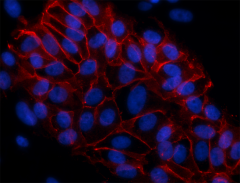
-

Madin-darby canine kidney epithelial cell line, MDCK, was cultured in a chamber slide until confluent. The cells were fixed with 1% paraformaldehyde (PFA) for 10 minutes, permeabilized with 0.5% Triton X-100 for 10 minutes, and blocked with 5% FBS for 30 minutes. The cells were then intracellularly stained with 10 µg/mL of CD324 (clone DECMA-1) Alexa Fluor® 594 (red) in blocking buffer overnight at 4°C. Nuclei were counterstained with DAPI (blue). The image was captured with 40X objective. -

Human paraffin-embedded colon cancer tissue slices were prepared with a standard protocol of deparaffinization and rehydration. Antigen retrieval was done with Tris-Buffered Saline 1X (1.0M, pH 7.4) at 95°C for 40 minutes. Tissue was washed with PBS/0.05% Tween 20 twice for five minutes and blocked with 5% FBS and 0.2% gelatin for 30 minutes. Then, the tissue was stained with 10 µg/mL of anti-human CD324 (clone DECMA-1) Alexa Fluor® 594 (red) at 4°C overnight. Nuclei were counterstained with DAPI (blue). The image was captured with a 10X objective. -

C57BL/6 mouse frozen intestine section was fixed with 4% paraformaldehyde (PFA) for 10 minutes at room temperature and blocked with 5% FBS plus 5% rat serum for 1 hour at room temperature. Then the section was stained with 5 µg/mL of CD324 (clone DECMA-1) Alexa Fluor® 594 (red) in blocking buffer overnight at 4°C. Nuclei were counterstained with DAPI (blue). The image was captured by 10X objective. -

Paraformaldehyde-fixed (1%), 500 μm-thick mouse liver tissue section was processed according to the Ce3DTM Tissue Clearing Kit protocol (cat. no. 427701). The section was costained with anti-mouse/human CD324 (E-Cadherin) antibody (clone DECMA-1) Alexa Fluor® 594 at 5 μg/mL (yellow), and anti-mouse CLEC4F antibody (clone 3E3F9) Alexa Fluor® 647 at 5 μg/mL (magenta) and counterstained with DAPI (blue). The section was then optically cleared and mounted in a sample chamber. The image was captured with a 20X objective using Zeiss 780 confocal microscope and processed by Imaris image analysis software.
Watch the video.
CD324, also known as E-cadherin, cadherin-1, CDH1, and UVO is a member of the cadherin superfamily. It is a calcium-dependent, transmembrane cell-cell adhesion glycoprotein composed of four extracellular cadherin repeats and a highly conserved cytoplasmic tail region. CD324 is widely expressed in epithelial cells in the colon, uterus, liver, keratinocytes, brain, heart, muscle, kidney, and pancreas as well as erythroid cells. CD324 functions as a cell adhesion molecule involved in development, bacterial pathogenesis, and tumor invasion. In bacterial pathogenesis, the ectodomain of CD324 mediates bacterial adhesion to mammalian cells, while the cytoplasmic domain is required for internalization. CD324 binds to the αEβ7 integrin to mediate cell adhesion and also interacts with a number of intracellular proteins including including erbin, ezrin, caspase-3, caspase-8, β-catenin, presenilin 1, and casein kinase II as well as other extracellular proteins including the EGF receptor.
Product DetailsProduct Details
- Verified Reactivity
- Mouse, Human
- Reported Reactivity
- Cynomolgus, Dog, Pig
- Antibody Type
- Monoclonal
- Host Species
- Rat
- Immunogen
- E-Cadherin extracellular domain
- Formulation
- Phosphate-buffered solution, pH 7.2, containing 0.09% sodium azide.
- Preparation
- The antibody was purified by affinity chromatography and conjugated with Alexa Fluor® 594 under optimal conditions.
- Concentration
- 0.5 mg/mL
- Storage & Handling
- The antibody solution should be stored undiluted between 2°C and 8°C, and protected from prolonged exposure to light. Do not freeze.
- Application
-
ICC - Quality tested
IHC-P, IHC-F, 3D IHC - Verified - Recommended Usage
-
Each lot of this antibody is quality control tested by immunocytochemistry. For immunocytochemistry, a concentration range of 5.0 - 20 μg/mL is recommended. For immunohistochemical staining of formalin-fixed paraffin-embedded tissue sections, a concentration range of 5.0 - 10 μg/mL is suggested. For immunohistochemical staining of frozen tissue sections, a concentration range of 2.0 - 5.0 μg/mL is suggested. For 3D immunohistochemistry on formalin-fixed tissues, a concentration of 5.0 µg/mL is suggested. It is recommended that the reagent be titrated for optimal performance for each application.
It is also recommended using EDTA-based solutions for dissociating attachment-dependent cell lines.
* Alexa Fluor® 594 has an excitation maximum of 590 nm, and a maximum emission of 617 nm.
Alexa Fluor® and Pacific Blue™ are trademarks of Life Technologies Corporation.
View full statement regarding label licenses - Application Notes
-
Additional reported applications (for relevant formats) include: immunoprecipitation1, Western Blotting1, immunomicroscopy3, biological function1,2, and spatial biology (IBEX)4,5.
-
Application References
(PubMed link indicates BioLegend citation) -
- Vestweber D, et al. 1985. EMBO. 4:3393. (IP, WB, FA)
- Nakagawa M, et al. 2001. J. Cell Sci. 114:1829. (FA in canine cells)
- Mohamet L, et al. 2010. PLoS ONE. 5:e12921. (IF)
- Radtke AJ, et al. 2020. Proc Natl Acad Sci U S A. 117:33455-65. (SB) PubMed
- Radtke AJ, et al. 2022. Nat Protoc. 17:378-401. (SB) PubMed
- Product Citations
-
- RRID
-
AB_2563230 (BioLegend Cat. No. 147306)
Antigen Details
- Structure
- Member of the cadherin superfamily. Calcium-dependent, transmembrane cell-cell adhesion glycoprotein composed of four extracellular cadherin repeats and a highly conserved cytoplasmic tail region.
- Distribution
-
Widely expressed in epithelial cells in the colon, uterus, liver, keratinocytes, brain, heart, muscle, kidney, and pancreas as well as erythroid cells.
- Function
- Cell adhesion molecule involved in development, bacterial pathogenesis, and tumor invasion. The ectodomain of CD324 mediates bacterial adhesion to mammalian cells, while the cytoplasmic domain is required for internalization.
- Interaction
- Interacts with a variety of proteins including erbin, ezrin, caspase-3, caspase-8, EGF receptor, β-catenin, presenilin 1, casein kinase II, and others.
- Ligand/Receptor
- αEβ7 integrin.
- Cell Type
- Embryonic Stem Cells
- Biology Area
- Cell Adhesion, Cell Biology, Immunology, Innate Immunity, Neuroscience, Stem Cells, Synaptic Biology
- Molecular Family
- Adhesion Molecules, CD Molecules
- Antigen References
-
1. Overduin M, et al. 1995. Science 267:386.
2. Boggon TJ, et al. 2002. Science 296:1308.
3. Berx G, et al. 1995. EMBO J. 14:6107.
4. Perl AK, et al. 1998. Nature 392:190. - Gene ID
- 999 View all products for this Gene ID 12550 View all products for this Gene ID
- UniProt
- View information about CD324 on UniProt.org
Related FAQs
Other Formats
View All CD324 Reagents Request Custom Conjugation| Description | Clone | Applications |
|---|---|---|
| Purified anti-mouse/human CD324 (E-Cadherin) | DECMA-1 | FC,ICC,IP,WB,FA |
| PE anti-mouse/human CD324 (E-Cadherin) | DECMA-1 | FC |
| Alexa Fluor® 594 anti-mouse/human CD324 (E-Cadherin) | DECMA-1 | ICC,IHC-P,IHC-F,3D IHC |
| Alexa Fluor® 647 anti-mouse/human CD324 (E-Cadherin) | DECMA-1 | FC,ICC,IHC-F,3D IHC,SB |
| PE/Cyanine7 anti-mouse/human CD324 (E-Cadherin) | DECMA-1 | FC |
| PE/Dazzle™ 594 anti-mouse/human CD324 (E-Cadherin) | DECMA-1 | FC |
| PerCP/Cyanine5.5 anti-mouse/human CD324 (E-Cadherin) | DECMA-1 | FC |
| APC anti-mouse/human CD324 (E-Cadherin) | DECMA-1 | FC |
| Brilliant Violet 421™ anti-mouse/human CD324 (E-Cadherin) | DECMA-1 | FC |
| APC/Fire™ 750 anti-mouse/human CD324 (E-Cadherin) | DECMA-1 | FC |
Customers Also Purchased
Compare Data Across All Formats
This data display is provided for general comparisons between formats.
Your actual data may vary due to variations in samples, target cells, instruments and their settings, staining conditions, and other factors.
If you need assistance with selecting the best format contact our expert technical support team.
-
Purified anti-mouse/human CD324 (E-Cadherin)
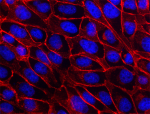
Canine kidney cell line MDCK was cultured in a chamber slide... 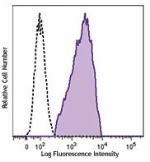
MDCK epithelial cell line was stained with purified CD324 (c... -
PE anti-mouse/human CD324 (E-Cadherin)
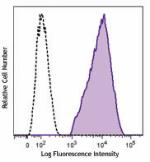
MDCK epithelial cell line was stained with CD324 (clone DECM... -
Alexa Fluor® 594 anti-mouse/human CD324 (E-Cadherin)
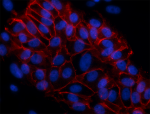
Madin-darby canine kidney epithelial cell line, MDCK, was cu... 
C57BL/6 mouse frozen intestine section was fixed with 4% par... 
Human paraffin-embedded colon cancer tissue slices were prep... 
Paraformaldehyde-fixed (1%), 500 μm-thick mouse liver tissue... -
Alexa Fluor® 647 anti-mouse/human CD324 (E-Cadherin)
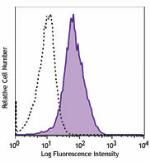
MDCK epithelial cell line was stained with CD324 (clone DECM... 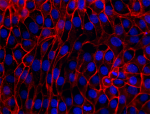
Madin-darby canine kidney epithelial cell line, MDCK, was cu... 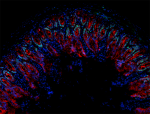
C57BL/6 mouse frozen intestine section was fixed with 4% par... 
Paraformaldehyde-fixed (4%), 500 μm-thick mouse lung tissue ... 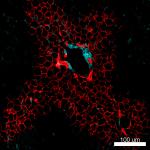
Confocal image of C57BL/6 mouse liver sample acquired using ... 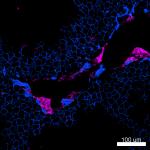
Confocal image of C57BL/6 mouse liver sample acquired using ... -
PE/Cyanine7 anti-mouse/human CD324 (E-Cadherin)
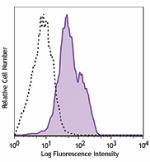
MDCK epithelial cell line was stained with CD324 (clone DECM... -
PE/Dazzle™ 594 anti-mouse/human CD324 (E-Cadherin)
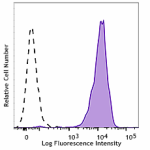
MDCK epithelial cell line was stained with CD324 (E-Cadherin... -
PerCP/Cyanine5.5 anti-mouse/human CD324 (E-Cadherin)
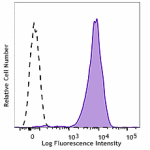
MDCK epithelial cell line was stained with CD324 (E-Cadherin... -
APC anti-mouse/human CD324 (E-Cadherin)
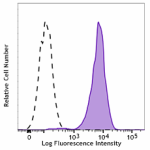
MDCK epithelial cell line was stained with CD324 (clone DECM... -
Brilliant Violet 421™ anti-mouse/human CD324 (E-Cadherin)
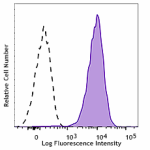
MDCK epithelial cell line was stained with CD324 (E-Cadherin... -
APC/Fire™ 750 anti-mouse/human CD324 (E-Cadherin)
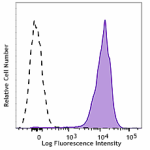
MDCK epithelial cell line was stained with CD324 (clone DECM...











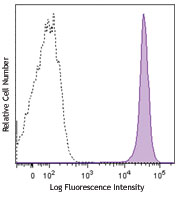






Follow Us